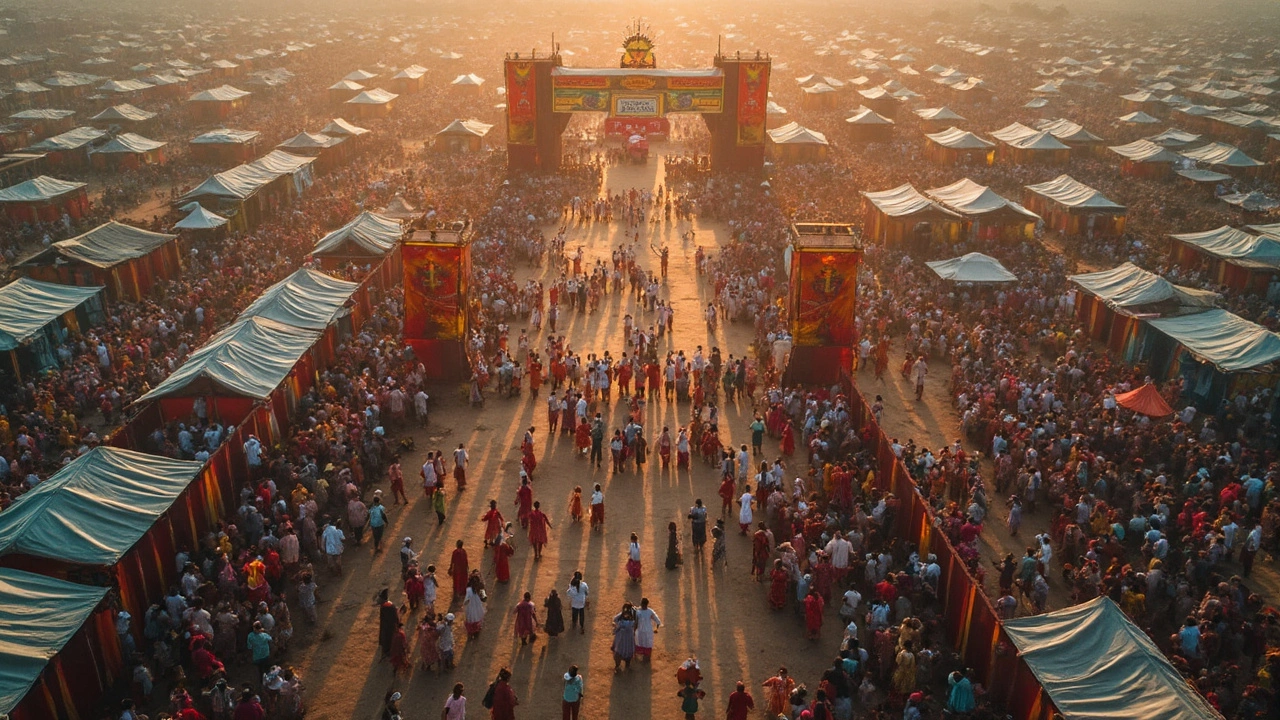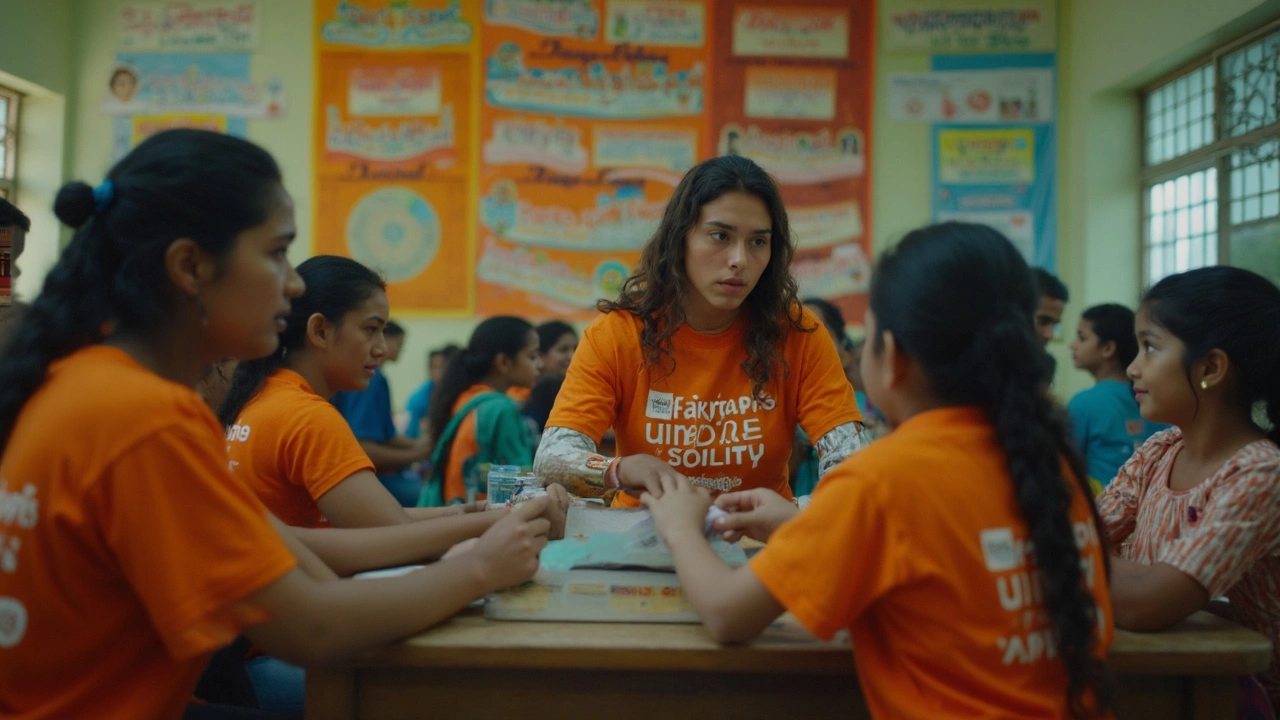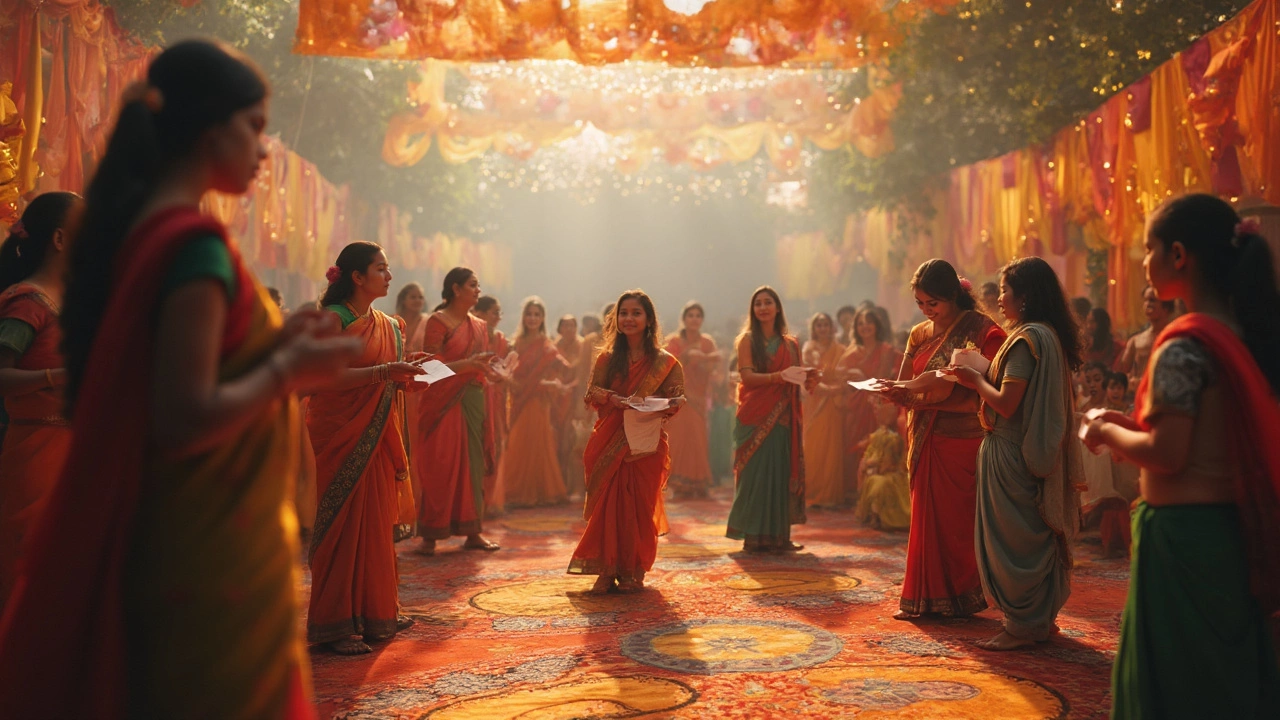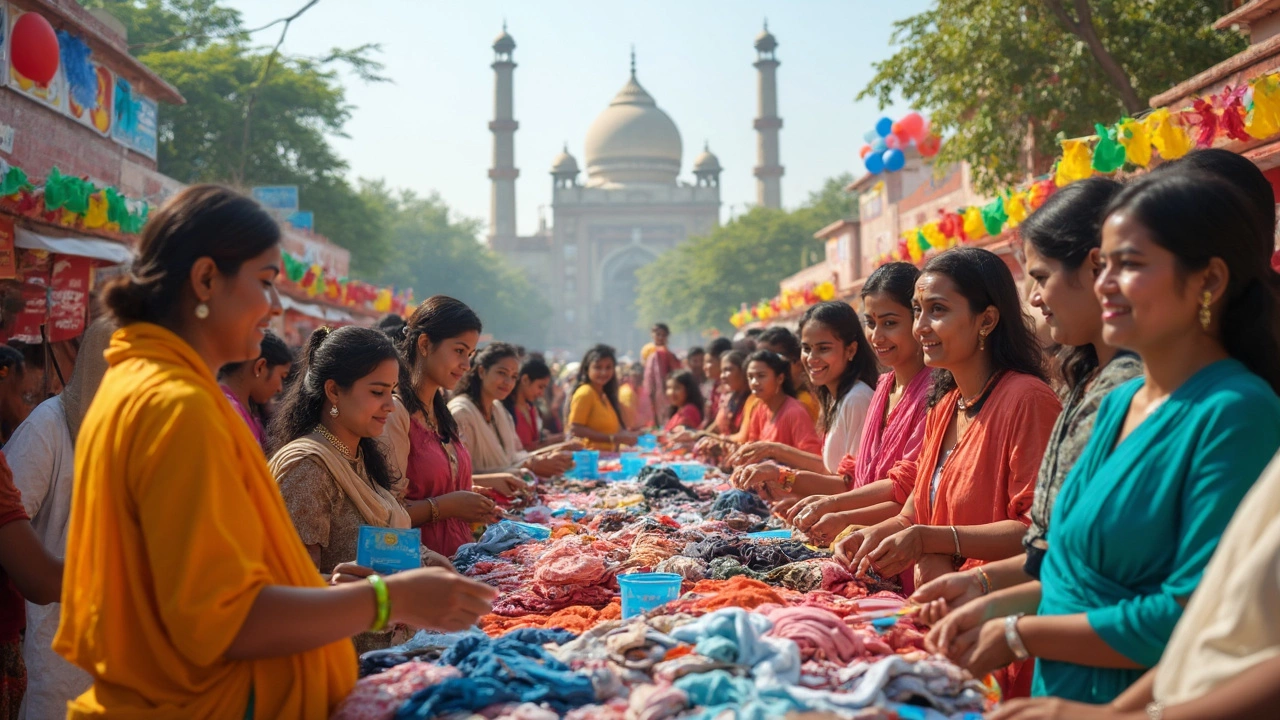Charity events aren't just about dressing up or sharing a nice meal—they have concrete objectives that help drive change. This article breaks down what these events really aim to accomplish, from gathering money and raising awareness to building community. You'll discover practical tips to make charity events more effective and engaging. We’ll even toss in some surprising facts about how small efforts can have a big impact. Whether you're planning your first fundraiser or just curious how these gatherings work, you'll get what you need right here.

- Created by: Lydia Carmichael
- Completed on: 22 May 2025
- Categories: Events
Ever wondered which charity event takes the crown for being the biggest? The answer depends a bit on what you mean by "biggest." Is it about the most money raised, the number of participants, or just the sheer scale of attention? The charity world is packed with headline-grabbing fundraisers, but one name keeps popping up: Live Aid.
Back in 1985, Live Aid brought music legends onto stages in London and Philadelphia, all in one day, with the same wild goal—help stop the famine in Ethiopia. The final total? Around $127 million raised, and a TV audience of around 1.9 billion people. That’s almost half the world’s population at the time. No wonder it’s still talked about in fundraising circles, even 40 years later.
So, if you’re thinking of starting a charity event or just want to know what sets these mega-fundraisers apart, you’re in the right spot. It all starts with a simple idea—rally folks for a cause—and gets supercharged when that idea explodes across countries, TV screens, and the internet. Keeping things focused on the cause and making it easy for everyone to join helps keep energy high and donations rolling in.
- Defining 'Biggest' in Charity Events
- Spotlight on Live Aid
- Today’s Largest Fundraisers
- Tips from Big Event Organizers
- How You Can Get Involved
Defining 'Biggest' in Charity Events
When people talk about the biggest charity event, a lot depends on how you define “biggest.” Is it about the money raised, the total number of people who show up, or the international reach? There’s no single answer—different events win in different categories.
For money raised in a single day by a one-off event, Live Aid still holds a record with about $127 million collected in 1985. It wasn’t just the cash, though; the event was broadcast to nearly two billion people. To put that in perspective, it’s like everyone in India tuning in at once today.
Other events, like the Red Nose Day telethon in the UK, bring in tens of millions every year and have gathered more than £1 billion total over the decades. And then there’s GivingTuesday, a worldwide online event, which just last year saw over $3 billion raised in the U.S. alone on a single day. That’s a huge mark for a digital-only campaign.
If crowd size counts, consider marathons like the New York City Marathon, where tens of thousands of people run, and many raise funds along the way. And for sheer participation, online charity drives can pull in millions of people from around the globe.
- Most money in a single event: Live Aid ($127M in 1985)
- Biggest ongoing telethon: Red Nose Day (over £1 billion total)
- Largest digital day of giving: GivingTuesday ($3B+ in 2023 in the U.S. alone)
- Biggest participation: Global marathons and online challenges
So, when folks search for the biggest charity event, it really depends on what specific type of “biggest” you’re after. Some events lead with cash, others with lasting impact or sheer numbers, and a few manage to nail all three at once.
Spotlight on Live Aid
If you want to talk about the biggest charity event, you can’t ignore Live Aid. This wasn’t your average bake sale or silent auction. Live Aid made history with its ambition and reach. Bob Geldof and Midge Ure pulled it together in just ten weeks. The event happened on July 13, 1985, and it was broadcast live to 150 countries. That’s wild when you think about the technology back then.
Here’s what set it apart: two concerts ran the same day, one at Wembley Stadium in London and the other at John F. Kennedy Stadium in Philadelphia. The artist lineup read like a who’s who of music at the time—Queen, U2, David Bowie, Madonna, Elton John, and even a surprise reunion of Led Zeppelin. People all over the world tuned in. Some skipped work, others stayed up all night, just to be part of it.
Thanks to ticket sales, telethons, and direct donations, Live Aid raised roughly $127 million for famine relief in Ethiopia. And let’s be real—the real impact was even bigger. Musicians and celebrities using their fame to spotlight a massive problem woke up government leaders and inspired copycat fundraisers for years to come.
| Fact | Data |
|---|---|
| Date | July 13, 1985 |
| Countries broadcasting | 150 |
| Global audience | 1.9 billion |
| Total funds raised | $127 million (1985 USD) |
| Main venues | Wembley Stadium (London), JFK Stadium (Philadelphia) |
Even decades later, documentary films and social media posts still pop up about Live Aid’s ripple effects. The event proved you can move the world if you have the right story and enough energy to pull people together. If you’re hunting for inspiration on how to make your own impact, studying how Live Aid was organized might just spark your next big idea.

Today’s Largest Fundraisers
Charity events have gone way beyond bake sales. These days, some fundraisers look more like massive parties, online marathons, or viral challenges. If we’re talking strictly about the biggest charity event today, it’s not always just one annual show—it’s a mix of big names and massive reach. Check out a few events that top the charts in terms of funds raised and people pulled in.
- Red Nose Day (UK & USA): Started in 1988 in the UK, it’s a TV charity marathon with comedy sketches and celebrity guests. In the U.S., it’s run by Comic Relief USA, raising over $324 million since 2015 for kids in poverty.
- World’s Biggest Coffee Morning (Macmillan Cancer Support): This UK event started in 1990 and is now a nationwide social get-together, raising more than £290 million by 2022 for cancer support.
- Giving Tuesday: It started as a social media campaign in 2012, right after Black Friday and Cyber Monday. In 2023 alone, people donated over $3.1 billion in the United States, breaking records for a single day of giving.
- Téléthon (France): This is a 30-hour live TV fundraising marathon each December. The 2023 Téléthon brought in over €90 million for muscular dystrophy research.
Seeing all these events together, you really notice how creativity and global connection make a difference. Most of the top fundraisers are heavily promoted on TV or social media, and they usually team up with celebrities or big companies to get the word out. Online events and donation platforms also make it super simple to give, so people can take part from anywhere.
| Event Name | Location | Most Recent Annual Funds Raised | Primary Beneficiary |
|---|---|---|---|
| Red Nose Day (US) | USA | $49M (2023) | Children in poverty |
| World's Biggest Coffee Morning | UK | £22M (2022) | Cancer support |
| Giving Tuesday | Global | $3.1B (2023, US) | Various worldwide causes |
| Téléthon | France | €90M (2023) | Medical research |
It’s wild to think that just sharing a funny photo, joining a livestream, or organizing a coffee break at work can add up to millions—or even billions—raised for good. These top fundraisers show that when people come together, even simple actions can make a huge impact. If you want to get in on the action, most of these events let anyone sign up online or pitch in from home, so joining the next big thing is just a click away.
Tips from Big Event Organizers
Getting inspired by the biggest charity event is one thing, but organizing something memorable? That takes some insider know-how. Big event organizers, like the teams behind Live Aid and Red Nose Day, know a few tricks that anyone planning a fundraiser will find valuable.
First, create a simple message that anyone can repeat. During Live Aid, the goal was crystal clear: “Feed the world.” No long-winded mission statements. Just a point everyone agreed with and could remember.
Next up, go for big partnerships. Major fundraisers usually mix in media, tech, and celebrity power. The Comic Relief team (behind Red Nose Day) always goes heavy on star power and live TV, grabbing attention and donations in one sweep. If you can’t call up celebrities, try partnering locally with radio stations, sports teams, or viral influencers in your community.
- Make giving easy. Live Aid’s phone and TV donations worked because people could give quickly. These days, organizers use simple QR codes, mobile apps, Venmo, and even Instagram stickers for donations. If it takes more than 30 seconds, people will bounce.
- Keep the momentum up. Events like the American Cancer Society’s Relay For Life keep fundraising fresh by updating totals live, shouting out big donors, and letting participants share their own stories during the event. A steady hum of activity keeps people interested and excited.
- Have a backup plan. In 2020, charity runs and walks shifted online overnight when COVID-19 hit. Smart organizers had digital tools ready, so donations still rolled in even without an in-person crowd.
One more thing—always say thanks. The biggest charity events email, tweet, and call their supporters after every fundraiser. A real thank you goes a long way when you want people to come back next year.

How You Can Get Involved
Joining in on the world’s biggest charity event might sound overwhelming, but honestly, there are so many low-barrier ways to play a part. Whether you’re donating, joining a volunteer team, or even coming up with your own fundraising twist, every little effort counts.
If you want to dive right in, lots of big events like Live Aid or Comic Relief offer official websites where you can register as a supporter or fundraiser. Most of these platforms walk you through donation steps, and some even suggest ready-made ideas—think bake sales, sponsored walks, or virtual marathons—that you can run locally. For example, the British Red Nose Day lets folks host small parties or costume days at work or school, which together add up to millions each year.
Here are some practical ways to get involved:
- Donate directly: Official pages always have secure, simple ways to give—be sure to double-check the URL to avoid scams.
- Start your own fundraiser: Platforms like GoFundMe or JustGiving make it easy to run mini-events for the main charity campaign. Share your story on social media to rally more support.
- Volunteer: Big events need an army of helpers, from crowd control at concerts to helping set up technology for livestreams. Most official events have sign-up forms for local and virtual volunteering roles.
- Join the conversation: Raising awareness is just as crucial—sharing posts, using event hashtags, or even just telling a neighbor makes a difference.
A useful tip: always check the event’s guidebook or FAQ board before you start anything new. They list what’s needed, what’s allowed, and sometimes kits or graphics you can use. Stay alert for fake fundraising pages—unfortunately, scammers pop up around massive charity drives.
As Bill Gates once said at a Bill & Melinda Gates Foundation event,
“Every person can make a difference—not by doing the biggest thing but by doing their thing.”
Keep it simple, choose what excites you, and don’t underestimate the collective power of lots of small actions. Seriously, even my cat Hazel donated her leftover treats during a local supply drive last year—it all adds up.
People always ask about the most popular charity, especially when they're planning charity events. This article lays out which charities consistently lead the pack and why. You'll get tips for choosing the right charity for your event, plus some surprising facts about big-name organizations. We'll also touch on how the popularity game shifts with trends and global events. Expect straight-to-the-point info and practical advice.
Ever wondered what's the most successful fundraiser in history? Here you’ll get the facts, learn about record-breaking sums, and discover what made a single charity event pull in billions. You’ll also pick up real-life strategies from the world’s fundraising giants. Whether you run a school auction or dream of global impact, this article breaks down what made the top fundraiser work—and how you can borrow those ideas.


